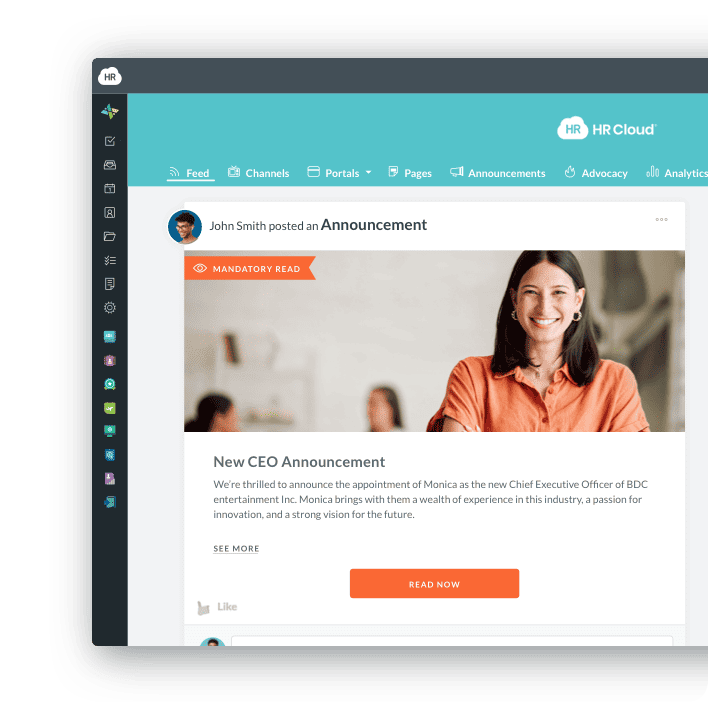Positive Workplace: Understanding the Impact on Employee Well-Being



 Cut onboarding time
by 60%—here's the
Ultimate Checklist
that helped do it.
Cut onboarding time
by 60%—here's the
Ultimate Checklist
that helped do it.

Ever considered how your employees are doing? Their mood, health, and interest in work really matter for how well they perform. Remember, work and life are connected; if your employees are dealing with health or personal issues, it affects their job. Workplace health is a crucial factor in maintaining a productive and positive environment.
At the same time, 35% of employees experience work stress, and almost 60% show signs of depression. It's crucial for managers to tackle these challenges. Businesses do need to take proactive steps to ensure and support employee well-being, focusing on work-life balance and job satisfaction.
This article delves into how employee well-being affects the workplace and gives practical tips for keeping your team healthy and happy.
What is Employee Well-Being? 
Well-being is basically how someone feels about their health, happiness, and overall satisfaction with life. When we talk about employee well-being, it's all about their quality of work. This covers their physical, emotional, mental, financial, and social aspects.
Why does it matter? Because how your employees feel affects how they do their jobs - how focused, productive, and responsible they are. It's especially crucial in safety-sensitive jobs. For example, overworked workers may make mistakes handling powerful equipment. Employee well-being isn't just a buzzword; it's vital to create a positive and safe environment when ensuring a healthy workplace.
And one more thing: Taking care of your employees isn't just a nice gesture - it's good for your business. When your team is happy and satisfied, they're more likely to be grateful and get more done, which ultimately makes your business more successful. This focus on employee happiness and job satisfaction can significantly boost overall workplace health.
Why Employee Well-Being Matters
Understanding why employee well-being matters is critical. In today's competitive business world, employees often push themselves to the limit - working overtime, working from home, and staying connected. Ironically, this pursuit of success can lead to exhaustion and increased job stress. At the same time, in their rush to focus on improving productivity and efficiency, companies often lose sight of a key factor: employee well-being and work-life integration.
Recent research shows that around 80% of employees are more engaged when companies have effective wellness programs. Additionally, 70% of employees are burnt out or are at risk of it. A whopping 87% believe employers should be more responsive to their needs. These numbers highlight the urgency of prioritizing employee well-being initiatives and implementing flexible work policies. And if you need more convincing, let's dive into the specific benefits for companies that care about employee well-being.
Your Employees Are More Engaged
Let's start with the good news, according to the Gallups survey: Engaged employees can boost profitability by 23%, increase sales by 18%, and enhance productivity by 14%. Furthermore, engaged employees experience a remarkable 66% improvement in overall well-being. Not only do these individuals find joy and satisfaction at work, they also thrive in their personal lives. They're less stressed, enjoy better health, and feel fulfilled both professionally and personally. Engaged and satisfied employees are an invaluable asset to your organization, contributing to higher employee motivation and job satisfaction.
Your Employees Experience a Boost in Productivity
Your employees experience a boost in productivity. Think about how good it feels when you get a good night's sleep or spend time with loved ones without using devices. That refreshed feeling isn't just a feeling - it's backed by science. Research shows that proper sleep and relaxation play a major role in health and productivity. It's not just a vague idea; there's solid evidence that explains how our brains need time to recover and perform well. Getting enough sleep, taking breaks, and minimizing distractions like messages and emails are key to improving employee performance and maintaining a healthy work-life balance. To keep tabs on this, using employee performance software is a smart move - it helps track and manage the process effectively.
Reduced Employee Turnover
Research indicates that implementing employee wellness programs can cut turnover by as much as 40%. It's not rocket science - if people feel valued in your company, they're more likely to stay. This saves you from having to deal with sudden layoffs and keeps your budget intact. On the flip side, high turnover leads to increased replacement costs, causing significant financial strain. Losing an employee typically costs around 33% of his or her base salary. Clearly, there's a strong case for businesses to focus on employee retention, and one effective way is to prioritize employee well-being and job satisfaction.


Employees Strive to Learn and Grow
Creating a positive workplace means giving employees the opportunity to learn and grow. A reliable way to get there is to implement a learning analytics platform that is tailored to your business. This software not only helps employees acquire knowledge but also improves the overall efficiency of the organization. By identifying strengths and knowledge gaps, you can strategically manage training programs and ensure that employee learning directly benefits your business in the long run. This approach contributes to employee motivation and satisfaction, fostering a culture of continuous improvement.
Your Company Offers a Positive Work Environment
A toxic workplace is a major obstacle to employee well-being. It can result from misunderstandings between employees and ineffective management styles and can extend to unpleasant jokes, discrimination, and undue pressure. Research shows that 75% of employees have encountered a toxic workplace, with 87% agreeing it negatively impacts mental health. Ensuring a positive workplace is critical for employers, and can be achieved by gradually introducing employee well-being programs and monitoring their impact. The goal is clear: make a positive difference, enhance well-being, and foster thriving workplaces. Not only does this benefit the business, but it also significantly improves people's lives and contributes to overall employee satisfaction.
How to Ensure Employee Well-Being
Fostering employee well-being isn't a quick fix; it's about making consistent, meaningful changes. Here are some steps to reshape your workplace culture, ensuring that employee well-being becomes a top priority.
Cultivate a Healthy Work Environment
A healthy work environment covers many factors, from ergonomic office equipment to the option of taking short naps during the day, which has proven to boost productivity more than continuous mental work. Research indicates that sleep aids in information processing and internalization, while intense mental activity can hinder such outcomes. Many forward-thinking companies prioritize spaces for rest and exercise to enable employees to switch modes, fostering better health, happiness, and increased productivity. This approach to healthy work design can significantly reduce work stress and improve overall workplace health.
Offer Flexible Working Hours
When it comes to employee preferences for flexible work schedules, studies vary:
-
65% prefer to work remotely all the time;
-
73% want flexibility in working hours;
-
83% prefer a hybrid model.
What's clear is that employees around the world value workplace flexibility and flexible work options. In addition, 99% and 90% respectively, believe that remote work benefits would improve their mental and physical health. As of 2025, around 80% of businesses have adopted more flexible work arrangements.
Help Your Team Grow
People enjoy their jobs more when they feel valued, recognized, and have opportunities to grow. Offering training options is key to keeping employees happy. When they can learn and grow, they're more likely to be engaged and stay. On the other hand, if there are no opportunities to grow or learn within the company, employees may choose to leave. That's why providing training, using tools like the aforementioned LAP or custom onboarding software, is critical for maintaining employee motivation and job satisfaction.
To promote employee well-being, consider these steps as well:
-
Provide your team with the right tools.
-
Implement flexible work policies that prioritize employee well-being.
-
Tailor workloads to individual needs, health, and emotions.
-
Foster a culture of transparency.
-
Maintain a clear view of well-being indicators so that managers and leaders can intervene when needed.
Understanding the significance of employee well-being isn't just a trend; it's a must. Begin with small steps - offer flexible schedules, shorter workweeks, counseling, or fitness perks. Gradually, your company culture will shift toward prioritizing employee well-being and work-life integration. Taking care of your employees will pay off with a healthy team atmosphere, unity, engagement, and ultimately, increased productivity and profits. By implementing flexible work practices and focusing on employee happiness, you can create a thriving workplace that benefits both your staff and your business.
Author Bio:
Gaurav Sharma is the founder and CEO of Attrock, a results-driven digital marketing company. Grew an agency from 5-figure to 7-figure revenue in just two years | 10X leads | 2.8X conversions | 300K organic monthly traffic. He also contributes to top publications like HuffPost, Adweek, Business 2 Community, TechCrunch, and more.
Keep Reading
45 Boss Day Messages That Actually Mean Something (2026 Guide)
When is Boss Day 2026? Mark your calendar for October 16, 2026 — the annual opportunity
Birthday Wishes for Coworkers: 50+ Messages That Build Workplace Connection
A coworker's birthday isn't just another calendar date—it's a meaningful opportunity to
Embracing Diversity: Recognizing Different Cultures in the Workplace
Workplaces today reflect the incredible diversity of the world around us. People bring
Like What You Hear?
We'd love to chat with you more about how HR Cloud® can support your business's HR needs. Book Your Free Demo

Build a Culture of Recognition. Boost Engagement. Guaranteed.
Workmates empowers employees to stay informed, connected, and appreciated—whether they’re on the front line, in the office, or remote. Recognition drives 12x higher engagement.Trusted by industry leaders in every sector




Cut Onboarding Costs by 60%.
Take the confusion and follow-ups out of onboarding with automated workflows, digital forms, and structured portals—so new hires ramp faster 3X quicker.Trusted by industry leaders in every sector




